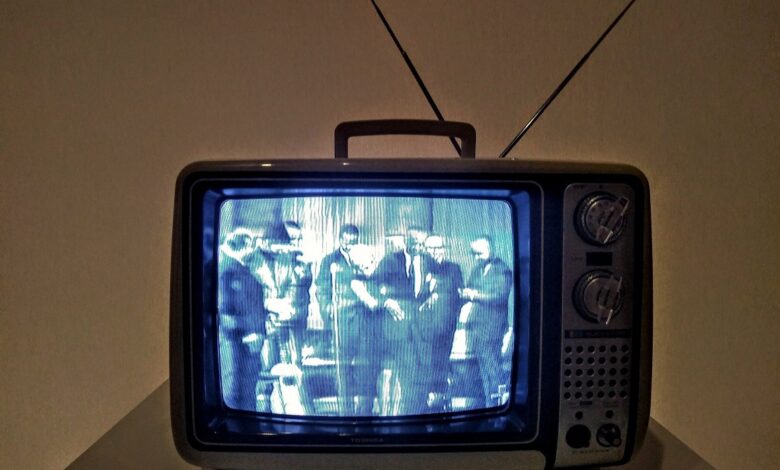The Evolution of Italian TV Channels and Their Global Influence

Italian television has undergone a remarkable transformation over the past seven decades, evolving from a state-run monopoly to a flourishing, multifaceted industry with substantial global influence. This journey reflects broader shifts in technology, politics, and culture, mirroring Italy’s societal changes.
Let’s follow the historical steps of Italian TV, and as a bonus, learn how to watch Italian TV in the USA.
From State Monopoly to Commercial Competition
Television in Italy began in 1954 with the establishment of RAI (Radiotelevisione Italiana), the national public broadcaster. Initially, RAI held a monopoly over television broadcasting, operating three channels: RAI 1, RAI 2, and RAI 3. These channels were instrumental in shaping Italian culture and identity, offering a mix of news, entertainment, and educational programming.
The landscape began to change in the late 1970s and 1980s with the rise of private broadcasters. Silvio Berlusconi’s Fininvest group, later known as Mediaset, launched Canale 5, Italia 1, and Rete 4. These channels introduced a new era of commercial television, focusing on entertainment and appealing to a broader audience. This shift created a duopoly between RAI and Mediaset, a dynamic that continues to shape Italian television today.
Embracing Digital and Satellite Broadcasting
The 1990s and 2000s saw technological advancements in Italian television. The introduction of digital terrestrial television expanded the number of available channels, offering viewers a wider variety of content. Satellite television also gained popularity, with Sky Italia becoming a major player in the market. These developments allowed for more specialized programming and greater access to international content.
In 2010, Europa 7 HD became one of the first broadcasters worldwide to use DVB-T2 technology, marking a key milestone in Italy’s digital broadcasting history.
The Rise of Streaming Platforms
The advent of the internet and digital streaming platforms has further transformed the Italian television landscape. RaiPlay, launched in 2016, offers on-demand access to a vast library of RAI-produced content, including films, series, and documentaries. This platform has made Italian programming more accessible to global audiences, reflecting the growing trend of international streaming services seeking diverse content.
Global Influence and Cultural Export
Over the years, we’ve seen the television landscape become more diverse, with a mix of global, regional, and local influences coming together. However, despite the growing overlap, the idea of television still being largely national remains strong. This is particularly true for Italy, where the development of TV dramas is closely tied to the country’s culture, identity, and heritage. Italian TV has long been a reflection of its national identity, helping to shape and tell the stories of the Italian people.
At the same time, it’s important to note that Italian television has always been open to outside influences. While much of its content is deeply rooted in national culture, it has also embraced foreign art forms and media, creating a mix of domestic and international elements. For example, American TV shows have had a significant impact on Italian drama, especially in the 70s and 80s, when they were seen as offering a fresh perspective to Italian viewers. Initially, American television was viewed as a form of cultural colonization, but over time, it’s been seen more positively, as it helped reinvigorate Italian television during a period of decline.
However, while American television has played a big role in shaping Italian drama, the impact of Europe, particularly other European countries, has been less discussed. European TV dramas, while not as widely recognized, have subtly influenced Italian TV by offering different styles and storytelling techniques. This interaction, although often overlooked, has contributed to the richness of Italian television, adding depth and variety to the domestic landscape.
How to Watch Italian TV in the USA
Accessing Italian TV in the USA is easier than you might think! Platforms like UVOtv let you enjoy a wide range of Italian shows and channels without needing subscriptions or VPNs. With over 80 channels, including La7, Nove, and Real Time, UVOtv brings Italian TV right to your screen—legally and for free.
The platform is compatible with various devices, such as LG Smart TVs, Roku, Fire TV, iOS, and Android, offering flexibility and convenience. UVOtv also features an impressive on-demand library of Italian films and international titles, from celebrated directors like Nanni Moretti and Matteo Garrone, to lesser-known gems. It’s a cultural hub, letting you explore films in different languages.
Getting started is simple: download the app, sign up, and start streaming. No hidden fees, no hassle. With a user-friendly interface and personalized recommendations, UVOtv makes it easy to enjoy Italian entertainment, whether you’re reconnecting with your heritage or exploring Italy for the first time.
Conclusion
The evolution of Italian television from a state-controlled entity to a multifaceted industry mirrors Italy’s broader societal transformations. Its global reach continues to grow, with Italian programming reaching audiences worldwide and contributing to the global media landscape. As technology advances and audience preferences evolve, Italian television is poised to continue its dynamic journey, influencing and reflecting the culture of Italy and beyond.



